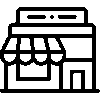- Products
- Platform
- Solutions
- Customers
- Support
- Pricing
 Website & Mobile & E-commerce
Website & Mobile & E-commerce
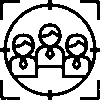 CRM
CRM
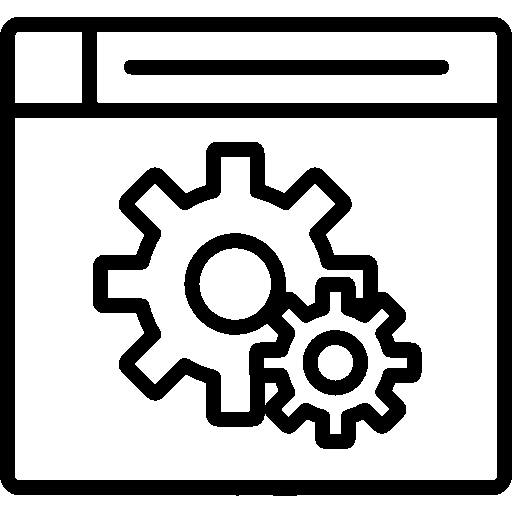 Operation & ERP
Operation & ERP
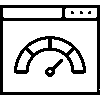 Productivity
Productivity
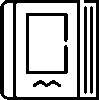 Support
Support
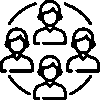 Community
Community
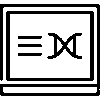 Learn
Learn
Application Support Point

With the intranet expenses application, we enable you to control all the expenses of your institution on a single screen. You can flexibly configure cost stages and categories. You can personalize your expenses by adding parameters and take control of all your expense management.
- Version History
- Application Features
- User Manual
- FAQ
- Community
Definition
Expenses application is a software that allows users to track their daily, monthly and annual expenses, manage these expenses by categorizing them and analyze their financial situation.
Aim
The purpose of the Expenses application is to enable users to easily record and track their daily, monthly and annual expenses in one place, manage their budgets more effectively by dividing their expenses into categories, analyze their financial situations through graphs and indicators, and make informed financial decisions.
Key Benefits
-
Provides a login screen for users to access the application.
-
It offers fast and secure login.
-
Daily, monthly and annual expenses are recorded.
-
Expenses are separated according to categories.
-
Spending habits are analyzed.
-
Includes detailed statistics of income and expenses.
-
The application can be personalized.
-
There are options such as notification settings, adding or editing categories.
Entrance
This is the login screen of the Expenses application.

Expenses
Expenses; Open Expenses are divided into seven groups: Pending, To Be Approved, In Process, Completed, Closed Expenses, and Canceled Expenses.
Open Charges
This is the screen where open expenses are displayed.

On the Open Expenses screen, Personnel Name, Form Code, Description, Stage, Date, Amount, Amount, VAT, Total information are listed in a table.
Pending
This is the screen where pending expenses are displayed.

On the Pending screen, Personnel Name, Form Code, Description, Stage, Date, Amount, Amount, VAT, Total information are listed in a table.
To be confirmed
This is the screen where the expenses to be approved are displayed.

On the To Be Approved screen, Personnel Name, Form Code, Description, Stage, Date, Amount, Amount, VAT, Total information are listed in a table.
in process
This is the screen where the expenses in progress are displayed.

On the In Process screen, Personnel Name, Form Code, Description, Stage, Date, Amount, Amount, VAT, Total information are listed in a tabular form.
Completed
This is the screen where completed expenses are displayed.

On the Completed screen, Personnel Name, Form Code, Description, Stage, Date, Amount, Amount, VAT, Total information are listed in a table.
Covered Expenses
This is the screen where closed expenses are displayed.

On the Closed Expenses screen, Personnel Name, Form Code, Description, Stage, Date, Amount, Amount, VAT, Total information are listed in a table.
Canceled Expenses
This is the screen where canceled expenses are displayed.

On the Canceled Expenses screen, Personnel Name, Form, Code, Description, Stage, Date, Amount, Amount, VAT, Total information are listed in a table.
Statistics
Statistics ; It is divided into three: Personnel Statistics, Unit Statistics and Project Statistics.
This is the screen where personnel statistics are displayed.

This is the screen where unit statistics are displayed.

This is the screen where project statistics are displayed.

Indicators
This is the screen where the application's indicators are displayed.

Settings
The settings document can be accessed via the relevant menu.
Please click for related content.
General Information
Adding Charges
A new expense is defined.

To add costs, enter Project Application, Project Code, Cost Center, Document Type, Document No, Date, Payment Method, Reference Code, Amount, VAT, Total Amount, Description information. After all operations are completed, they are saved by pressing the Save button.
Adding an Expense Form
A new expense form is defined.

To add an Expense Form, enter Project Application, Project Code, Cost Center, Reference Code, Price Settings and Description information. After all operations are completed, they are saved by pressing the Save button.
Summary
This is the screen where the expense summary is displayed. 
Expense summary screen includes Expense Maker, Expense Code, Cost Center, Date and Explanation information.
General Information
This is the screen where General Information is displayed.

On the General Information screen, Expense Creator, Expense Code, Project Application, Project Code, Cost Center, Document Type, Date, Payment Method, Advance Account, Reference Code, Amount, Description information have been edited.
Documents
This is the screen where documents are displayed.

On the documents screen, Document Information, Size, Registration Information, Transactions information are listed in a table.
The document is added by pressing the Add New Document button. The document is loaded by selecting the file for the attachment, and a description is entered.
Parameters
It is saved by adding parameters.

General Settings
Settings are customized by selecting the settings to be used according to the company's preference from the General Settings menu. 
The color of the application is saved by selecting the preferred color.
Notifications Can Be Managed.
The Phase Feature is used in two phases;
Approval Usage Method is made;
-Approval Mechanism available
-Stage Approval Fields are available.
The cost center can be selected from expenses.
.- Expense Limit Feature can be used
-.Budget Code can be obtained from Expenses.
The group and category in which the expenses are limited are selected.
The application can be separated according to my companies.
Default Company is selected (Verisay) / All records are saved to the default company.
Cost Addition Method; Expense can be selected as Expense Form or All.
Using the e-mail sending feature; Documents Can Be Added to E-Mail, Expense Approval E-Mail Can Be Sent Automatically.
Manual topic adding is allowed.
A person can enter expenses on behalf of someone else.
Additional Features
Cost Center available
Usage Area: Expense, Expense Form, All or None can be selected.
Budget Code Available.
Subject Available.
Using the Project Code, you can select the Area of Use: Expense, Expense Form, All or None.
Payment tracking is done using the Payment Feature.
Area of Use: Expense, Expense Form or None can be selected.
Associated Product can be used with Associated Product Category.
Notification Settings
This is the screen where notification settings are made. 
Notification Name information is available on the Notification Settings screen. Notifications are selected according to preference. After all operations are completed, they are saved by pressing the Save button.
Stage Definitions
Definitions are created for the expense stages. These phase definitions make it easier to track the project by showing at what stage the costs are.
Example stages: Pending, In Process, Completed. It is cancelled

The Phase Definitions screen lists the Color, Phase Name, and properties.
A phase is added by pressing the Add New Phase button.

To add a phase definition, Phase Information and Phase Options information is entered. After all operations are completed, they are saved by pressing the Save button. The stage is edited by pressing on the added stage.
Authorized Users

Name and Surname information of authorized users are listed on the Authorized Users screen. Stage authorizations are arranged by clicking on the authorized user.
-Editing Stage Authorizations

To regulate stage authorizations, authorization is given to the authorized user at each stage. After all operations are completed, they are saved by pressing the Save button.
Stage Approval Fields
This is the screen where Stage Approval Fields are displayed.

The Stage Approval Fields screen contains Title and Stage Change information.
Stage Approval Fields are added by pressing the Add New button.

To add a Phase Approval Field, Title, Phase Change information is entered. After all operations are completed, they are saved by pressing the Save button.
Subject Descriptions
This is the screen where subject definitions are displayed.

Title and Order information are entered on the Topic Definitions screen.

To add Subject Definition, Heading, Expense Item, and Order information are entered. After all operations are completed, they are saved by pressing the Save button.
Print Columns
Column Name, Width, Alignment information is edited on the Print Columns screen.

Mail Form Settings
This is the screen where Mail Form settings are edited.

The Mail Form Settings screen includes Mail Form and Mail Account information. Adjustments are made by clicking on the mail form.

On the Mail Form settings screen, Mail Account, Mail Template, and Mail Sending Status information are edited.
Automatic Numbering
Automatic Numbering ensures that a certain field automatically increases with each new record.

Fill in the Prefix and Suffix fields as desired or leave them blank.
Give an initial value to the Automatically Increased Number field. For example, if you give 1000, the following numbers will go like 1000, 1001, 1002...
Once the value is entered, an informational preview is shown on the right.
Parameters
This is the screen where the parameters are displayed.

Parameters are added by pressing the Add New Parameter button.

To add a parameter, information such as Parameter Name, Keyword, Sequence Data Type (veti type is divided into 6 items) is entered.
Data Type; Full Line Text, Multi Line Text, Multiple Choice Text (radio), Checkbox, Dropdown Menu (combo), By entering location information
Authorized Users
Having certain authorities in the company is an important element that increases organizational efficiency and workflow. Delegation ensures a clear distribution of tasks and responsibilities.

On the Authorized Users screen, users are registered by giving them the necessary authorizations.
Filtering Settings
Filtreleme ayarları, bir sistemde veya uygulamada belirli kriterlere göre verileri sınıflandırmak için kullanılır. Bu ayarlar, kullanıcıya yalnızca ilgili veya uygun içerikleri sunmaya yardımcı olur.

Filtreleme ayarları ekranında Tarih Aralığı, Konu, Personel alanları seçilerek filtreleme yapılır.
Personel İstatistikleri menüsünde farklı filtreleme alanları mevcuttur.

Filtreleme ayarları ekranında Tarih Aralığı, Ödeme Şekli alanları seçilerek sıralama yapılır.
Questions
Ask questions and get answers from other Entranet users.














